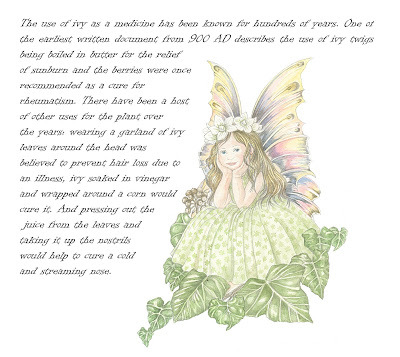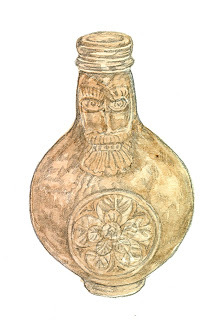Elizabeth Andrews's Blog, page 7
April 15, 2019
Easter Butterflies and other folklore!

Traditionally on Easter Day it is the thing for everybody to wear something new and bright like butterflies as there is an old saying that if you don't wear a new piece of clothing on this special day then the crows will spoil everything you have on!

If it fine on Easter Day it is counted as a good portent for a fine harvest that year, but if it rains before the morning service is over then a bad harvest will follow.
Many celebrations occur around Easter, not all centred around the church... apart from the well dressing and Maundy offerings there are some very strange ones going on around the country...here is one that made me chuckle!
Bottle Kicking and Hare Pie ScrambleEaster Monday. Hallaton, Leics
The proceedings start with the parading of a giant hare pie. Hallaton’s vicar emerges from church and blesses the pie. Great greasy handfuls of it are thrown into the hungry scrambling crowd. After that, things get even sillier … The Bottle Kicking contest between Hallaton and nearby Medbourne can commence. Confusingly, this involves neither bottles nor kicking. Instead the two village teams face each other at Hare Pie Bank and fight over three small beer barrels, which have been decked in ribbons. The casks are released in turn, and the opposing teams attempt to roll or carry them to their village boundary. The scrum is rules-free and notoriously bloodthirsty. The whole event can last for hours, with the both teams sharing the beer contained within the final cask.
Bottle Kicking is recorded as early as 1770, but its origin is thought to be much older. It is believed to be linked to the sacrifice of the hare in the Dark Age worship of the goddess Eastre.
In 1790, the rector tried to ban the event because of its pagan origins — the next day graffiti appeared on the vicarage wall: “No pie, no parson.” Unable to beat them, the church joined them.
From https://www.historic-uk.com/CultureUK/The-Folklore-Year-Easter/ if you are interested in this subject check out this website!
Published on April 15, 2019 06:15
April 10, 2019
Just a few snippets of folklore from the Blackdown Hills...
Published on April 10, 2019 08:42
December 21, 2018
How leeches fortell the weather...
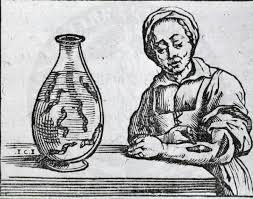
I have just been reading the most delightful book'Sweet Thames Run Softly' by Robert Gibbings first published in 1940.It's an account of his journey down the Thames in a punt in 1939 armed with a sketchpad and microscope.It's within these beautifully written pages that I found this little gem regarding how leeches are used to foretell the weather...
" Mr Taylor writing in 1813 suggests that we should put a leech into a large phial three parts full of rainwater, regularly change thrice a week and let it stand on a window frame fronting the north. In fair and frosty weather it will be motionless and rolled onto a spiral at the bottom of the glass; but prior to rain or snow it will creep to the top where, if the rain be heavy, and of some continuance,it will remain some considerable time; if trifling it will descend.Should the rain or snow be accompanied with the wind, it will dart about its habitation with amazing celerity and seldom ceases until it begins to blow hard. If a storm of thunder or lightning be approaching, it will become exceedingly agitated and express its feelings in violent convulsive starts at the top of the glass."
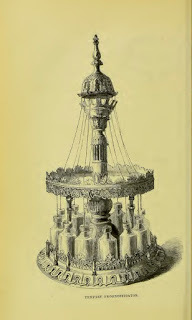
So I have a suggestion to the Met Office that they purchase some leeches and try this method of weather forecasting, it sounds that it would be more accurate than theirs!
Published on December 21, 2018 03:16
November 19, 2018
Witches Salt
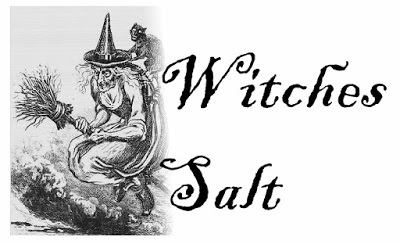
I am constantly being asked about the Witches Salt mentioned in my recent book The Haunting of Stoke Water. (Queenie uses it repel the evil spirits in Rosemarys flat.) So I thought I would just quickly explain how to make and use it.
“Queenie suddenly smiled with relief as she pulled a small glass phial from a piece of silk cloth. ‘There it is! I was worried I had left it at home.’ She looked at their anxious faces. ‘Shall we get started?’ Clutching the phial in one hand and a bundle of sage in the other Queenie headed out into the hall. ‘What is that?’ Joseph whispered to Sybil.She pointed to the jar in Queenie’s hand. ‘That’s Witches Salt and we are going to use the sage to smudge the flat and drive out this evil spirit.’They gathered around the waiting woman and watched as she pulled the stopper from the jar and opened the front door. As she poured a thin line of black salt across the threshold she muttered quietly, ‘I seal this place with a shield of protection and so we are safe within this home.”
Although I am sure knowing Queenie as well as I do she has tweeked the original recipe handed down by her witchy ancestor Hannah, she just can’t resist meddling as Sybil would point out.
Witches salt or black salt is used as a protection against evil and negative entities, it can even be used in the footprints of some one who you dislike to make them leave you alone.There are of course many ways of making black salt but here is a basic recipe:
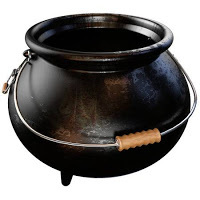
Two parts of sea salt mixed with one part of the scrapings from the bottom of your cast iron cauldron or if you do not use a cauldron ( shame on you what would Queenie say!) one part fine ash from your fire pit.You can also add the burnt ashes of some protective herbs to add to efficacy of the salt such as Lavender, Rosemary, Cinnamon, Clove, Caraway, Mug-wort, Sage and a touch of Verbena to bring success in your spell.
Just the thing to do on a dark winters night with friends!
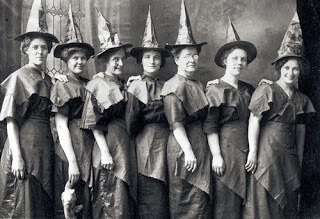
Published on November 19, 2018 07:43
November 17, 2018
The faeries of Lincolnshire
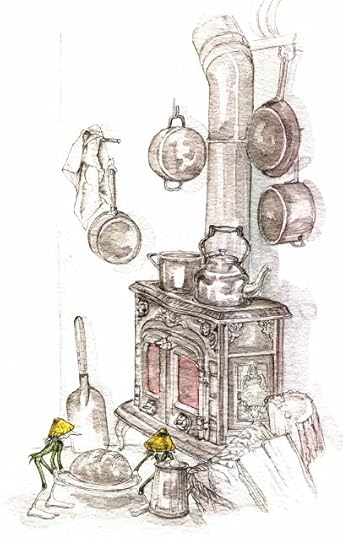
The tiny faeries of Lincolnshire are referred to as ‘Strangers’, small creatures with arms and legs that are as thin as threads, and on the ends of these,enormous hands and feet.They can be seen scampering about the flat lands of the Fens wearing their distinctive yellow hats in the shape of toadstools, the rest of their clothingis just the normal green jacket and breeches. Apart from this, their appearance is quite odd; they have long noses, great wide mouths out of which their tongues have a tendency to loll.Up until quite recently, offerings were left for these people on flat stones around the Fens, usually the first ears of corn and the first new potatoes of the crop.Bread and milk and also Beer would be left upon the fireplaces of the locals' homes to ensure a good harvest for the following year, for the ‘Strangers’ were believed to help the corn ripen and all things to grow.
If neglected, these faeries can be vindictive, affecting harvests, and even the birth rate!
from Faeries and Folklore of the British Isles
Published on November 17, 2018 12:48
November 15, 2018
If thou wouldst see faeries
Published on November 15, 2018 07:41
November 13, 2018
A few snippets on the folklore of the Ivy
Published on November 13, 2018 08:23
November 10, 2018
Witch bottle
Published on November 10, 2018 06:55
November 7, 2018
Witches Familiars
Published on November 07, 2018 06:30
August 28, 2018
Thomas Hardy and Puddletown Forest
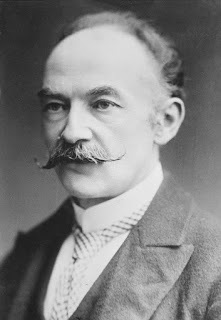
Thomas Hardy, English novelist and poet, born 2nd June 1840, near Dorchester, Dorset. Hardy set all of his major works in the southwest of England, known in his novels as 'Wessex' after the medieval kingdom of the Anglo Saxons. Many of the places that he used in his novels do exist but in many cases gave the places fictional names, such as Casterbridge in 'The Mayor of Casterbridge' is the county town of Dorset, Dorchester. And the infamous Mixen Lane of that novel was Mill Lane, according to Hardy where all the lowlifes and scoundrels of Dorchester lived.
I have to say I take exception to that as my grandparents and great grandparents lived there for many a year and good church going folk they were!
Hardy was born in a small cottage at Higher Bockhampton which lies at the edge of Puddletown Forest.
The cob and thatch cottage was built by Hardys’ great grandfather and has been little altered since the family left.
Hardy, despite training as an architect returned to his first love of writing and it was here in his birthplace that he wrote many of his earlier works including ‘Under the Greenwood tree’ and Far from the Madding Crowd.
This is one of several conifer plantations which consumed much of Dorset's heathland just after the war. There are still fragments of heath to be seen and some broad leaf trees, such as chestnut, oak and birch so it is a pleasant walk along the many paths threading through the forest.
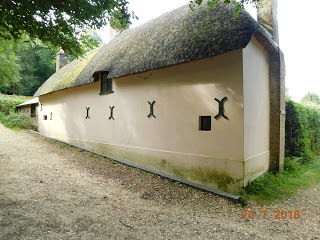
Thomas Hardy's birthplace.
This part of Dorset was mainly heath land in the time that Hardy lived there and inspired the references to the ‘Egdon Heath’ of The Return of the Native.
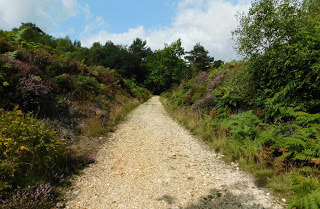
Today the area is planted with mainly conifers and would be unrecognisable to Hardy.

Within a mile of the cottage is the area known as Rainbarrows, a cluster of ancient bowl barrows on the edge of the steep escarpment fringing Duddle Heath.Bowl barrows are the most numerous form of round barrows and are believed to be funerary monuments dating from the late Neolithic period to the late Bronze Age. Constructed as earthen or rubble mounds and are sometimes ditched. They would have covered single or multiple burials. The three bucket urns containing cremated remains which were found at the site are now held in the Dorset County Museum in Dorchester.
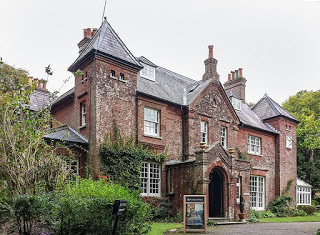
Hardy lived at Max Gate, Stinsford near Dorchester. His first wife Emma died in 1912 and was buried in Stinsford churchyard. Hardy later married his secretary Florence in 1914.Hardy died 11th January 1928 at Max Gate.
A local girl was delivering laundry to the house that morning and was refused entry by her older sister who worked for the Hardys. She told the young girl that the 'old man' had died and that he had been taken down to the kitchen. The local Doctor removed Hardy's heart and it was placed inside an Oxo tin. From there it was to be transferred to a casket supplied by the local undertaker and taken to Stinsford Vicarage until it was placed into his first wife's grave.His ashes were interred at Poets Corner.
This is a gruesome anecdote told by some... that the heart was removed, wrapped in a tea towel and placed in a biscuit tin which was then lodged in a meat safe awaiting the arrival of the undertaker.
When he arrived some time later he found the open tin, the remnants of the tea towel and a very satisfied looking cat. The undertaker grabbed the cat, wrung its neck and put the remains of Hardy's heart back into the tin with the cat saying, 'Mr 'Ardy wanted his 'eart buried at Stinsford and buried at Stinsford Mr 'Ardy's 'eart shall be!'
And so the remains of the heart plus the cat are supposed to have been interred together.
But according to the memoirs of the young laundry girl the cat never ate the heart and that it was all a fallacy!So I guess nobody will ever know!
Published on August 28, 2018 05:35




